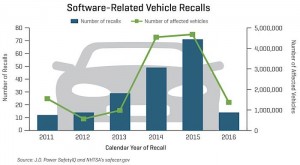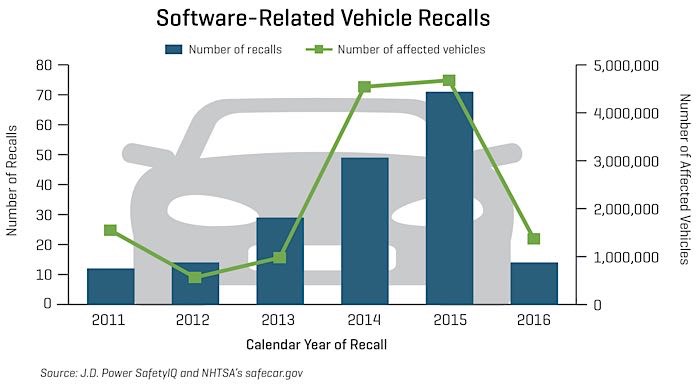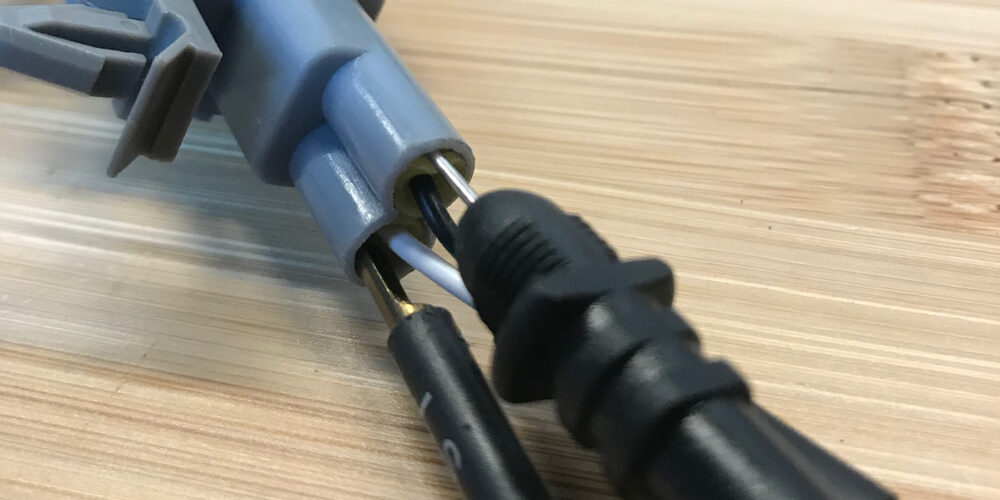 According to J.D. Power, 189 recalls and more than 800 TSBs have been issued concerning reflashing or reprogramming over the past five years. These numbers do not include the random updates that seem to appear out of thin air on the OE service information websites. Some of us may see this as a problem. But, we should see this as an opportunity.
According to J.D. Power, 189 recalls and more than 800 TSBs have been issued concerning reflashing or reprogramming over the past five years. These numbers do not include the random updates that seem to appear out of thin air on the OE service information websites. Some of us may see this as a problem. But, we should see this as an opportunity.
If you think this is just an underhood or driveablity technician’s problem, you are wrong. Many of these updates concern the ABS, stability control and associated systems that do not involve engine operation.
Confusion
Over the past five years, the language of reprograming, reflashing and system updates has become confusing for both technicians and consumers. If you buy a new car, the salesperson never mentions that it will need to update the software on the vehicle from time to time. Also, not too many owner’s manuals mention this either. It is not until the owner receives a recall notice in the mail that they find out that their vehicle needs an update. If it is a TSB or campaign, the owner may never know that their vehicle needs an update.
 For technicians, things can get even more murky when updating the software, firmware or calibrations. The service information and reflashing procedures can change from make to make dramatically. Compounding this difficulty, the reasons why a reprogramming operation is required are almost never explicitly detailed in the TSB. It is also common for non-emission modules like ABS to be unsupported.
For technicians, things can get even more murky when updating the software, firmware or calibrations. The service information and reflashing procedures can change from make to make dramatically. Compounding this difficulty, the reasons why a reprogramming operation is required are almost never explicitly detailed in the TSB. It is also common for non-emission modules like ABS to be unsupported.
This ambiguity has created problems for the aftermarket. When you start talking reflashing or reprogramming with a customer, it can cause problems. When they hear how new software/firmware can resolve an issue with their vehicle, they start to think that there is a defect with their car. They assume there should be a recall that the dealership should fix for free.
Some TSBs tell dealers to warranty or “goodwill” the reflash if the customer is outside the new car warranty, but these are the exception and not the rule.
The labor time for a reflash is typically 0.3 to 1.0 hours of labor in dealership time (book time and what your shop charges should be more).
The writing is on the wall: Reflashing is a necessary service for repairing your customers’ vehicles, and its importance is only going to increase. OEMs are issuing more TSBs that require reflashing every day. Turning away a job or not telling the customer about an updated reflash program because you can’t reflash yourself is going to hurt your business in both the short and long term.
Telematics to The Rescue?
The word “telematics” gets two reactions in the aftermarket. The positive reaction is from those who see opportunity with things like navigation and the connected vehicle. The negative reaction is the paranoid response from those who fear hacking and question who owns the data.
I see telematics as a way for manufacturers to update vehicles in the field and get more data to improve their vehicles.
However, I do realize that if the OEs have access to the information about service or maintenance parameters, chances are that they will be looking at ways to steer the driver back to the dealership and not an independent shop.














